Why use a Cavesson at all?
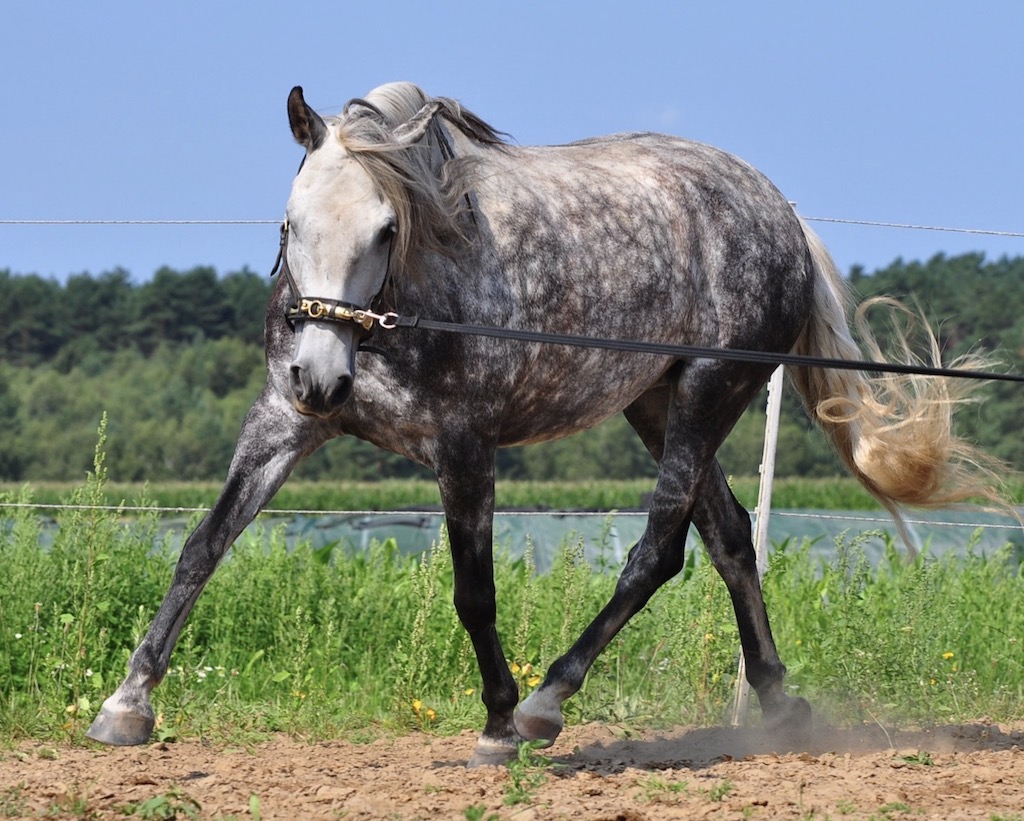
With a well-fitting and correctly adjusted cavesson,
you can exactly position and direct the horse’s head during lunging; even, after some preparation, at a great distance.
Cavessons are used for:
- lunging/double lunging
- classical work-in-hand
- long reining
- riding
1. Use a Cavesson or put a lunge line onto a bit?
“You can only achieve the correct bend by lunging with a cavesson, never with a bridle, because you cannot influence the horse’s lower jaw in the direction of the bend with a bridle.”
Bent Branderup
Important!
Please don’t ever put a lunge line onto a bit! Lunging on a bit is unfortunately a widespread abuse.
Along with the fact that you cannot give an a sensible aid with a lungeline through a bit to tell the horse how it should bend it also breaks the basic rule that a horse’s mouth is sacred.
I strongly oppose the use of side reins or draw reins on a bit as well. Moving well on a circle is only possible when the horse bends correctly.
Using a cavesson lets you achieve the poll position required for healthy work. Through bending at the poll and correct positioning of the head you can start working on the horse’s lateral bend.
In my experience, this is much less effective with other bitless bridles (like a halter). The cavesson has the advantage that you can work with the horse at a high gymnastic level without affecting the mouth.
No matter what I train with my horses: I always work bitless at first and choose a bridle with a bit later, if at all. In my opinion, a cavesson is an indispensable basic training tool. However, it must be a horse-friendly model which does not cause the horse any discomfort or pain. Unfortunately, many cavessons are too harsh.
2. Choosing a Cavesson
4 Different types of cavessons:
- Sturdy cavesson with metal nosepieces (recommended)
- with two hinges
- with three hinges
- Light cavessons without metal insert
- French Caveçon
- Serreta
When you begin working with the Online Course in Lunging I highly recommend a cavesson with metal on the nose piece.
This model is much more suitable for teaching a correct bend at the poll right from the start. Once the horse is familiar with our aids and reacts correctly, you can change to a cavesson without metal.
A horse’s head is very sensitive. No matter which type of cavesson you decide to use, please make sure it fits comfortably and your horse feels at ease with it.
The difference between two and three hinges in the metal
Cavessons can have either two or three metal hinges. I prefer the variation with two hinges.
Unfortunately these are difficult to buy in the US and UK.
Models with two hinges are less prone to the nutcracker effect, because the metal is bent across the nose. Sometimes a gap may exist between the metal and the flat top of the nose at the level of the middle ring, but the curved shape avoids pressure points. The side pieces often fit very smoothly in this variation.
Cavesson with a metal nosepiece & two hinges:
I admit, this cavesson does look a bit like an instrument of torture. It is quite heavy, which causes some horse owners concern. However, this model is the most horse-friendly cavesson, and the one I always recommend for lunging. Especially, if you work according to our Online Lunging Courses.
Other models, like the french Caveçon & Serreta (click to view picture), are not suited for this kind of work because they are unprecise and too harsh.
A cavesson with metal usually has one continuous piece of shaped metal without hinges, or two or three parts which are connected by hinges.
It is most important that the metal part is thickly and softly padded. The soft and thick padding ensures that the metal does not hurt the horse and that it can still easily lick and chew.
In this photo you can see the important points. The side parts should fit smoothly along the nose, like the blue lines. The red darts show the areas prone to pressure points. Please check here for possible tightness.
To compare: Imagine how you would fit a saddle to your horse’s back: where should it touch, where could it be too tight? The withers should be free and must not have any pressure points, but behind the shoulder we want a nice large area for the saddle to rest on, right? This is just like fitting the nose piece of the cavesson.
If the metal does not fit well, it might be altered by a blacksmith. The material often breaks easily in the cheaper models. For this reason I have chosen high quality VA-steel for my cavesson. It can be heated and shaped.
The side parts should fit smoothly along the nose:
Cavesson with a metal nosepiece & three hinges:
2. Due to the triangle the side pieces are tight on the nose and cause the nutcracker effect.
3. There are gaps where the metal does not conform to the shape of the nose.
The models with three hinges have decisive disadvantages:
- The models with three hinges are less stable and slip easily.
- The nose piece must be closed very tightly to avoid slipping.
- This is very uncomfortable for the horse and prevents the desired licking and chewing.
- The metal parts form a triangle on the nose and pressure points on the side of the nose bone.
- This creates a nutcracker effect.
An affordable model for newcomers:
– Cavesson by John Whitaker with 3 hinges
High-quality cavessons are pricey. It is understandable if someone does not want to get started with an expensive cavesson. You can use this very affordable model for work with the Course in Lunging: the LCAV-Lunge Cavesson by John Whitaker.
A versatile cavesson without metal:
– Micklem Bridle
3. Test first what you put on your horse’s nose!
“Only if it does not hurt at all, will it make it into my tack room.”
Before a piece of equipment goes on my horse’s nose, it has to pass the “shin test”. I put the nosepiece on my shin, push it tightly onto the shinbone, and then I press and pull as hard as I can (which I would never do with my horse!)
In the model with one metal piece the shape of the metal part must fit the horse’s nose exactly because – metal is inflexible!
If it is too tight anywhere, the horse will suffer significant pain, maybe even damage to the bone.
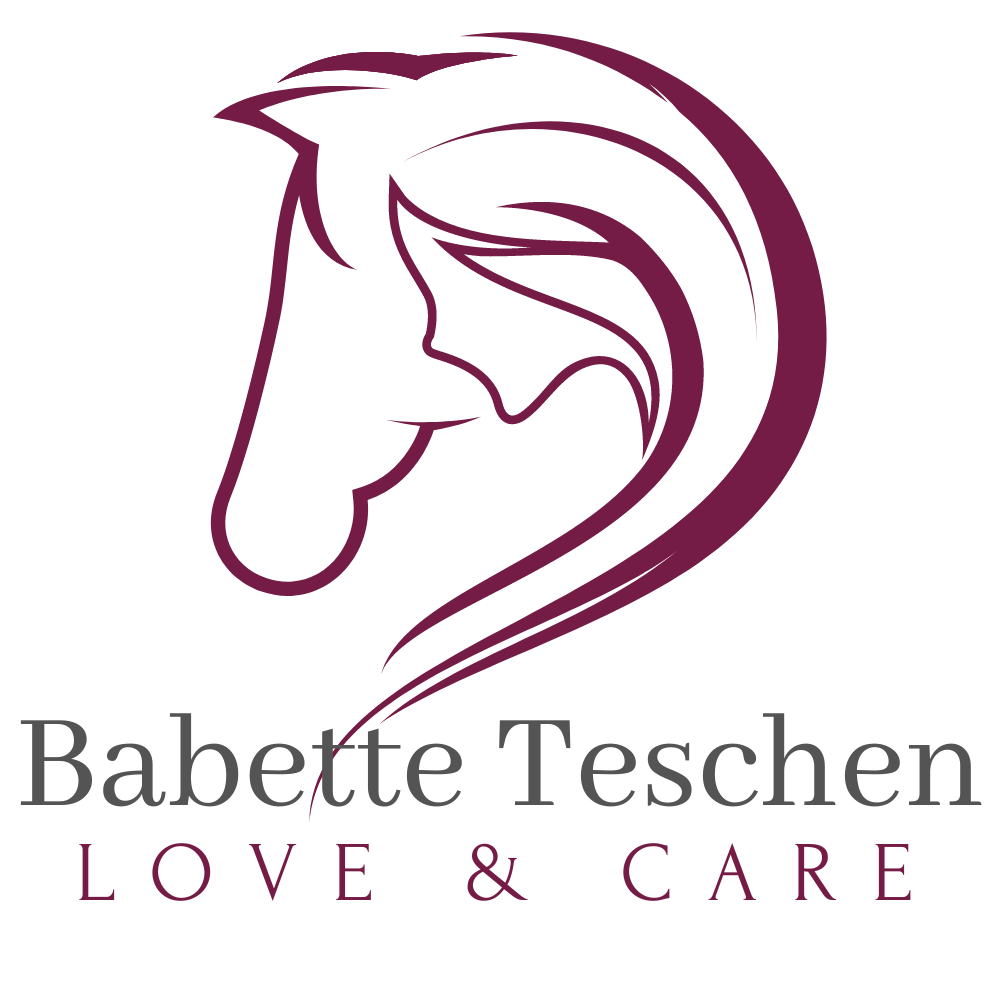
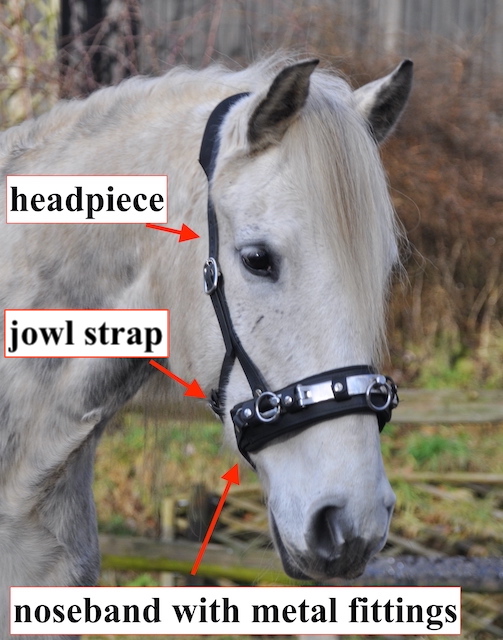
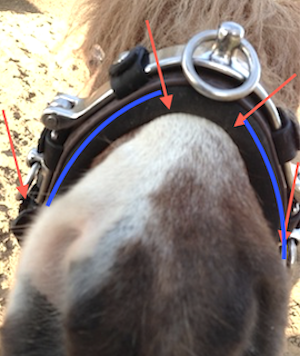
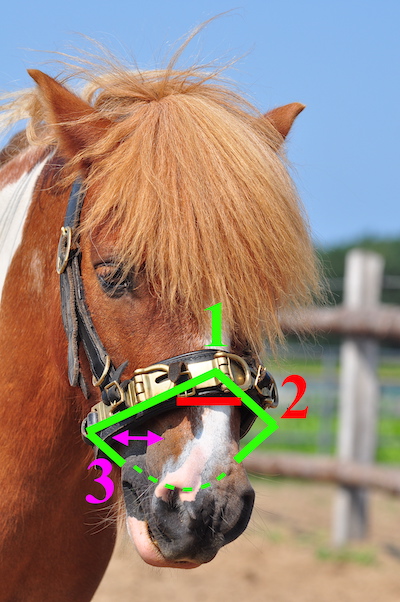
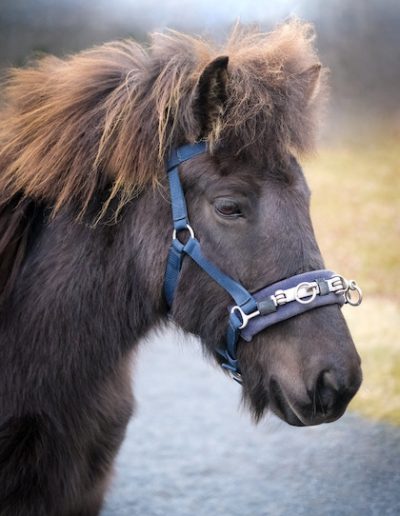
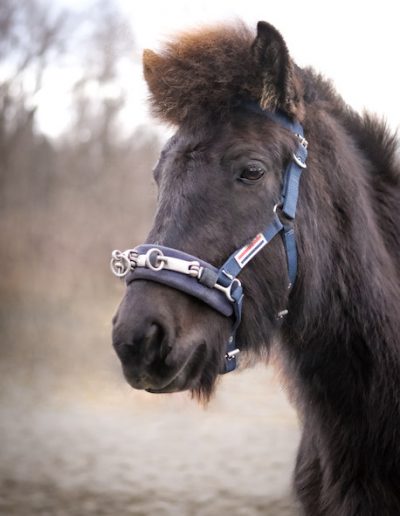
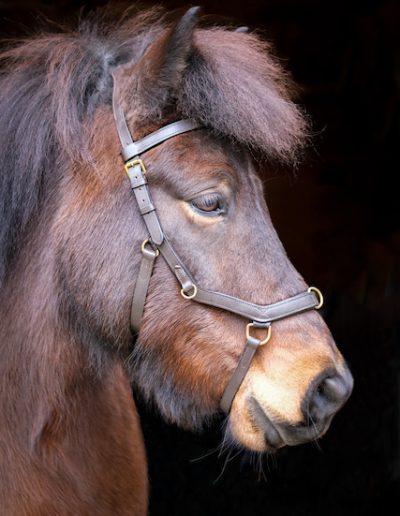
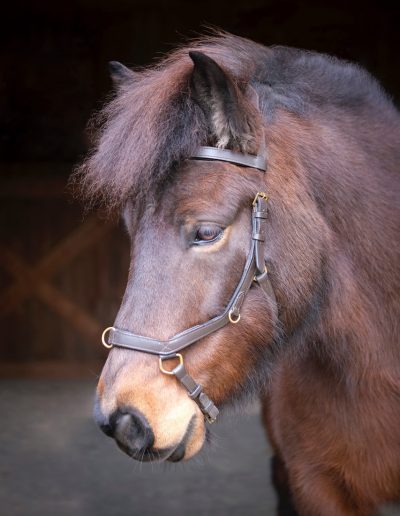
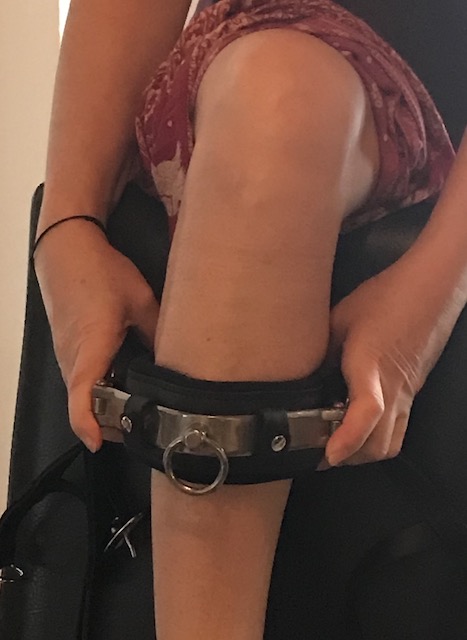
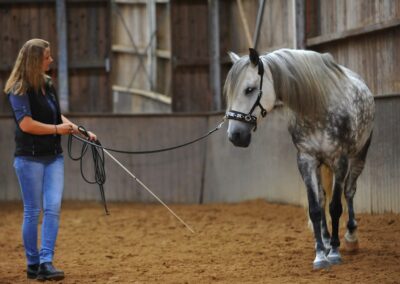
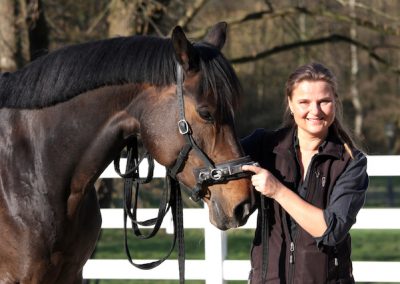
0 Comments